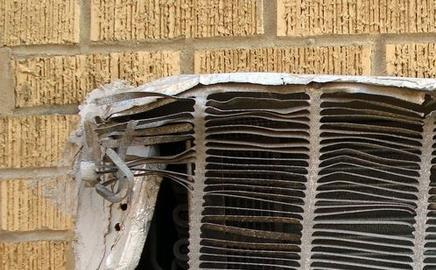Just a quarter of required public certificates will be viewable ... soon
It was to be Big Bang day in the energy certificate world. As of today, 42,000 public buildings nationwide were going to have to show a display energy certificate (DEC) in the reception. But waivers and software glitches are putting a dampener on the experience.
According to legislation, all publicly accessible, publicly funded buildings over 1,000m2 must show a DEC. But the government recently gave campus-style locations, such as hospitals or universities, a year-long waiver allowing them to show just one certificate for their site, cutting the number to around 10,000.
And a newsletter to CIBSE low carbon assessors claimed that the Department for Communities and Local Government (DCLG) had given everyone "a breather".
"CLG has reminded everyone that Trading Standards Officers cannot take enforcement proceedings where efforts have been made to get a DEC. Clients of an LCEA who is under assessment but has not yet been fully accredited will have made an effort to get a certificate and so should not face fines in the coming few months," said the newsletter. "CLG has pointed out however that in January if public buildings still don't have DECs the UK will be in contravention of the Directive and at that point they will take things much more seriously."
Archie Spence from London-based ABS Consulting, which has carried out around 50 DECs, said the effect had been deflating. “Since the government pulled back from any real threats about them people have been shrugging their shoulders saying it doesn’t really matter. I’m a supporter of the process. I wish the government was. They are paying lip service to the [European Energy Performance in Buildings Directive] legislation.”
Other experts draw attention to the assessment software itself, saying it crashes, has no back button and add that the benchmarking function - which should model average energy usage by building type to indicate reasonable consumption – is flawed.
“A secondary school, a seasonal hunting lodge and a speedway track all show the same energy benchmark,” said engineer, Jules Saunderson from Fulcrum Consulting who is trained in but not carrying out DECs. “I wouldn’t pin my hat on this software for risk of being sued.”
Meanwhile, all commercial buildings over 2,500 sq m now require an energy performance certificate (EPC) to be carried out on sale or rent. The EPC process began in April, when commercial buildings over 10,000 sq m needed the documentation.
The government recently said that commercial buildings put on the market before 1 October have until 4 January to be certified. However, buildings put on the market after 1 October must be certified ‘as soon as is practicable’.
A CLG spokesman called the roll out approach 'common sense approach to implementation and added: "The requirement for public buildings to have a DEC applies from today. Public authorities need to discuss any concerns around compliance with Trading Standards. If a public authority has been unable to produce DECs for its eligible buildings by 1 October, we would expect them to be able demonstrate that they have put in place arrangements to complete this work asap."
The penalty for not displaying a DEC is £500, but we understand Trading Standards’ emphasis is on promoting awareness and that they are unlikely to be taking a heavy-handed approach to this issue ahead of January’s EU-wide deadline."




























No comments yet